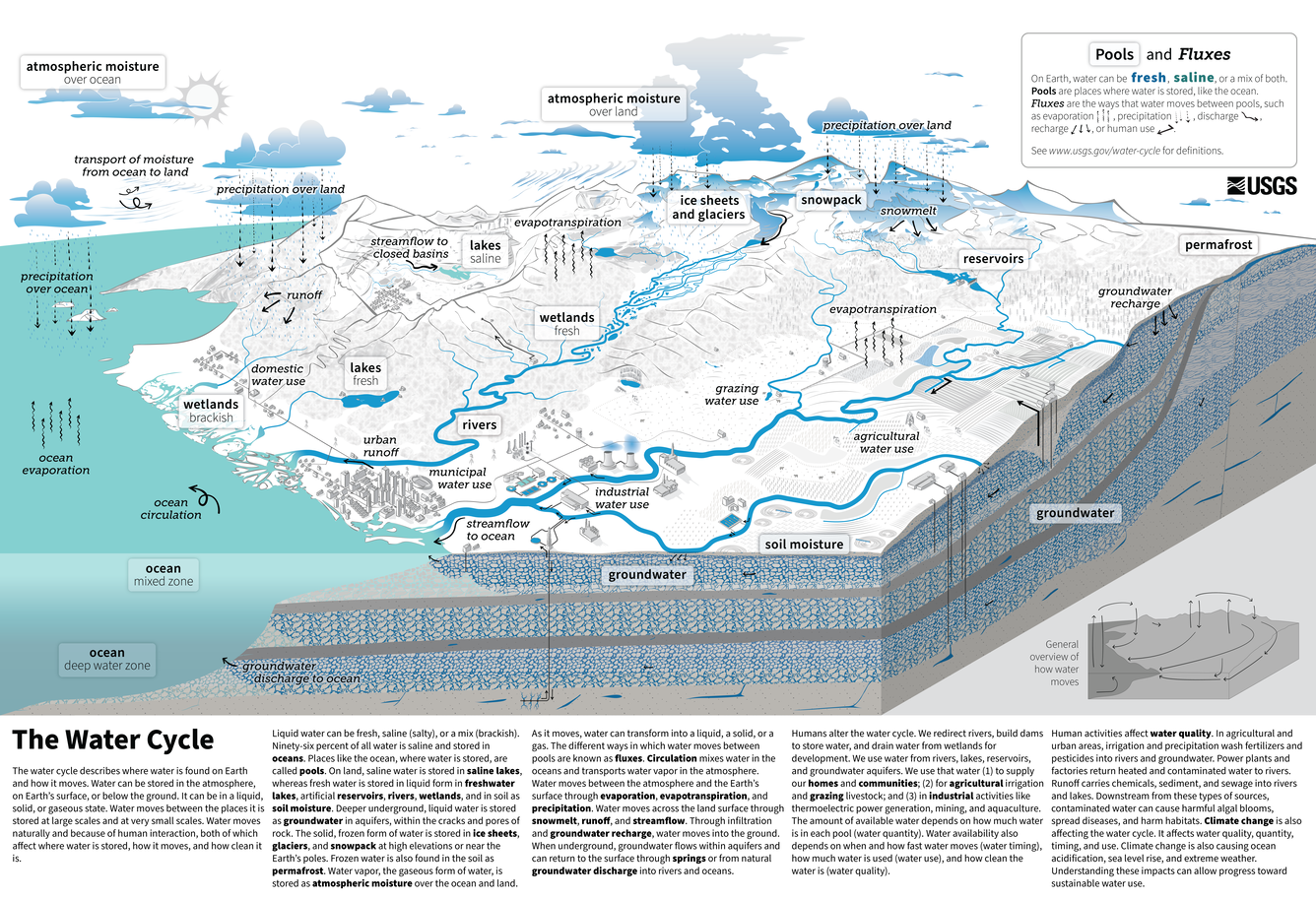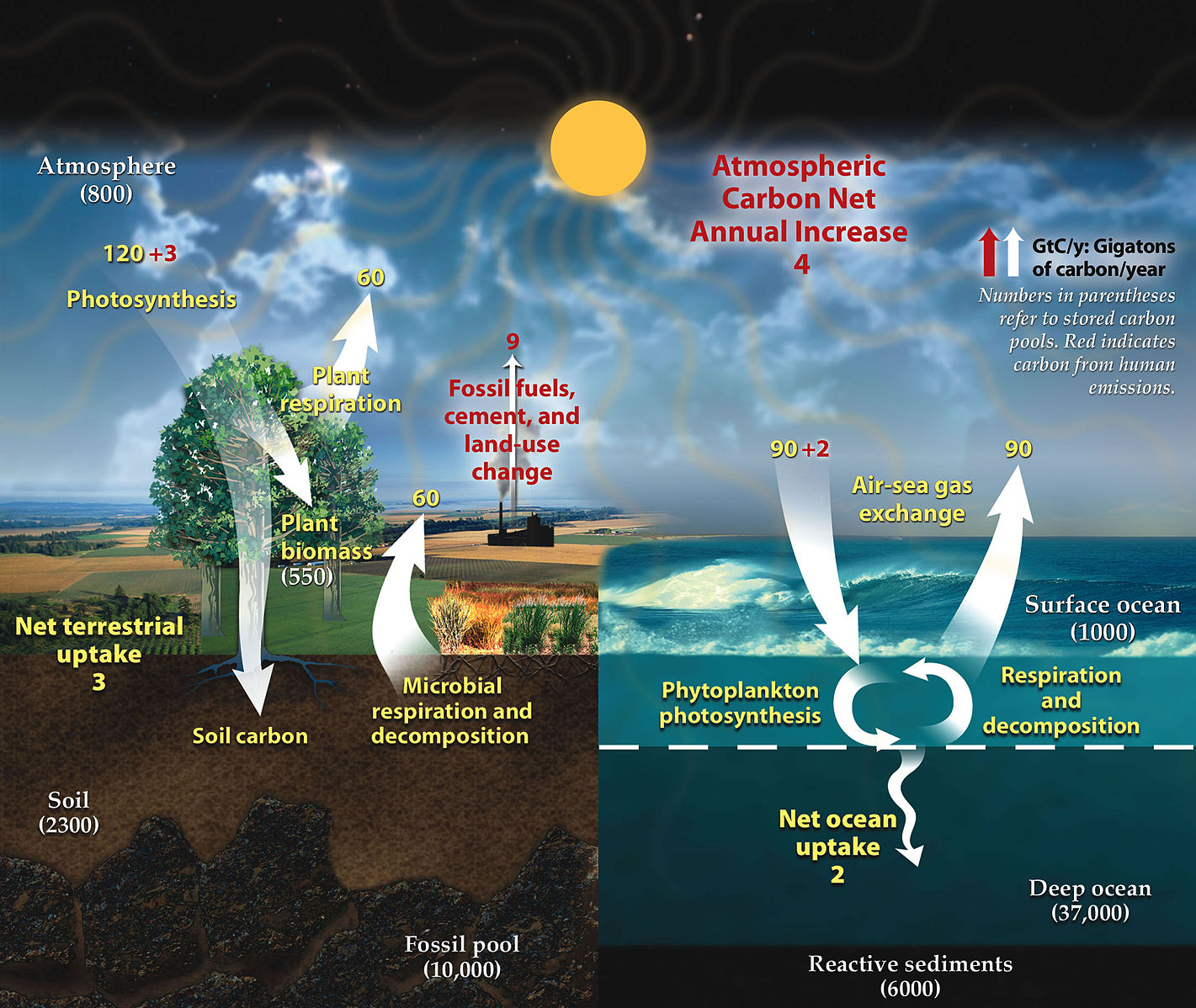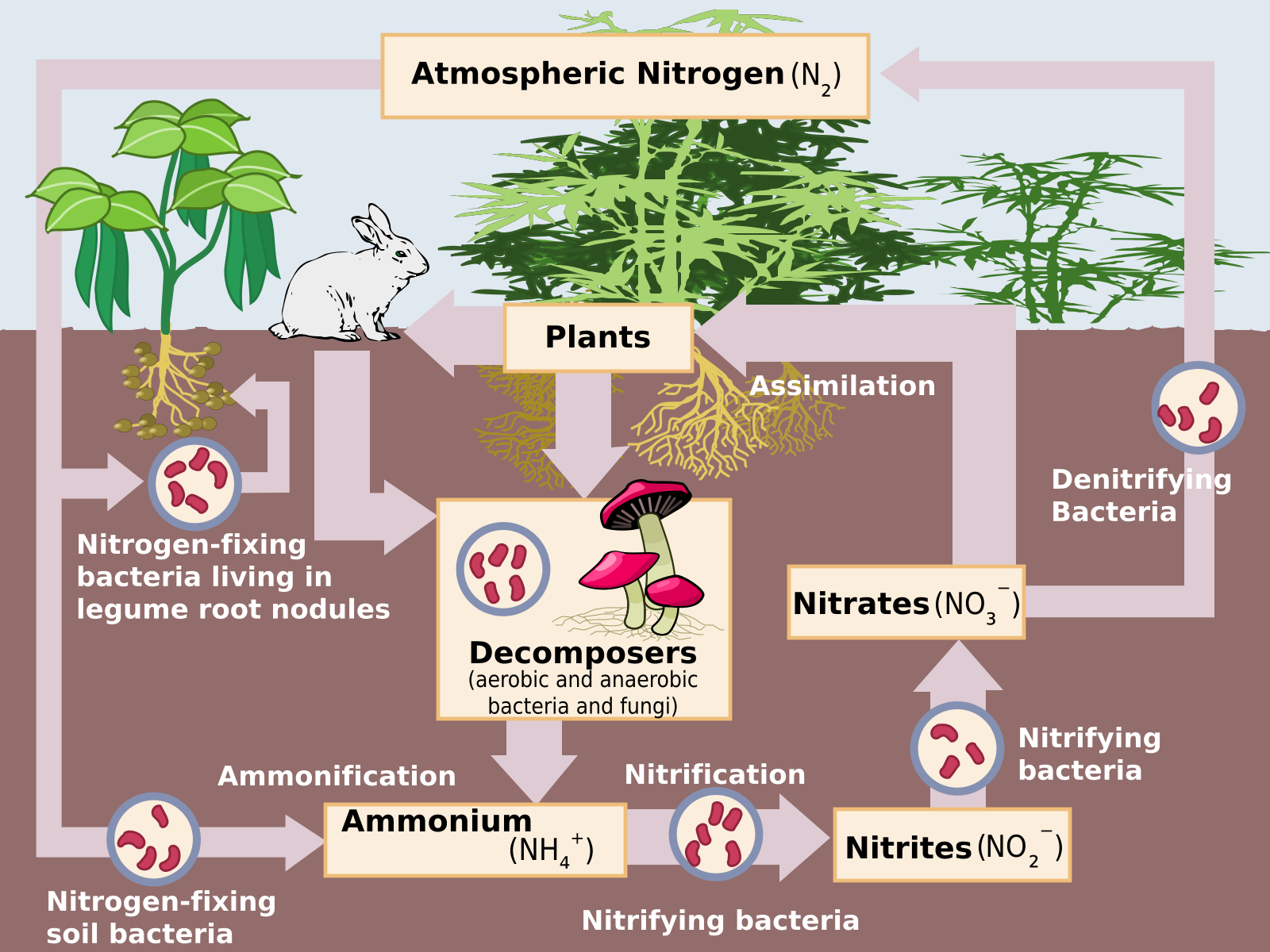IB Syllabus focus:
‘Soils have inputs, outputs, storages and flows; they underpin water, carbon and nitrogen cycling. Use flow diagrams to visualize system interactions.’
Soils are dynamic systems that regulate life-supporting cycles, storing nutrients, processing organic matter, and connecting atmosphere, lithosphere, biosphere, and hydrosphere through continuous interactions.
Soils as Systems
Defining Soil Systems
A system is a set of interrelated components with inputs, outputs, storages, and flows. Soils function as open systems, exchanging energy and matter with their environment.
Inputs to Soil Systems
Inputs are essential additions that maintain soil function and productivity:
Organic matter such as leaf litter and dead biomass.
Mineral particles derived from parent rock via weathering.
Atmospheric deposition including precipitation and dust.
Anthropogenic inputs such as fertilisers and compost.
Storages within Soil
Soil stores matter and energy in multiple forms:
Organic matter storage in humus and undecomposed litter.
Nutrient reserves (nitrogen, phosphorus, potassium).
Water content, crucial for plants and microorganisms.
Soil organisms including bacteria, fungi, and invertebrates.
Air-filled pores, enabling gaseous exchange for respiration.
Flows in Soil
Flows move materials within or through soils, linking inputs and outputs:
Transfers such as infiltration, percolation, aeration, and mixing by biota.
Transformations including decomposition, nutrient mineralisation, and humification.
Outputs from Soil
Outputs can deplete soil resources and alter balance:
Plant uptake of nutrients and water.
Erosion by wind and water removing surface layers.
Leaching of soluble minerals into groundwater.
Gaseous emissions from decomposition processes (e.g., CO₂, CH₄, N₂O).
Soils have inputs, outputs, storages and flows; they underpin water, carbon and nitrogen cycling. Use flow diagrams to visualize system interactions.

Diagram of the global hydrologic cycle highlighting infiltration into soils and groundwater recharge—key flows linking precipitation, soil moisture storage, and aquifers. Labels make the movement of water through soil explicit, reinforcing soil’s role within an open system. The figure also shows human water use; these extra features extend beyond the sub-subtopic but do not change the core processes shown. Source.
Soils and Biogeochemical Cycles
The Water Cycle in Soils
Soils are critical for water movement and storage:
Infiltration directs rainfall into soil layers.
Percolation moves water deeper to recharge aquifers.
Evapotranspiration returns moisture to the atmosphere via plants.
This regulates availability of fresh water for ecosystems and human use.
The Carbon Cycle in Soils
Soils act as both carbon sinks and sources:
Carbon enters soils through litterfall, root exudates, and organic matter deposition.
Decomposition releases CO₂ and CH₄ back to the atmosphere.
Humus formation locks carbon for centuries, stabilising global carbon balance.
Humus: Stable organic matter formed from decomposed plant and animal residues, improving soil fertility and structure.
Humus formation locks carbon for centuries, stabilising global carbon balance.

Conceptual carbon cycle showing exchanges among atmosphere, vegetation, soils, and the ocean, with arrows indicating inputs to and outputs from soil organic carbon. This visual supports discussion of soils as dynamic stores that can become sources under changing conditions. Some oceanic processes are included for completeness but exceed the sub-subtopic scope. Source.
The Nitrogen Cycle in Soils
Nitrogen cycling is vital for plant growth:
Nitrogen fixation introduces biologically available nitrogen via bacteria.
Nitrification converts ammonium to nitrates.
Denitrification returns nitrogen gas to the atmosphere.
Soil thus mediates nitrogen availability and prevents excessive atmospheric accumulation.

Labeled schematic of the nitrogen cycle showing the principal soil-based processes—biological fixation, nitrification, and denitrification—and the transfers between soil, plants, and the atmosphere. Arrow directions make inputs, outputs, storages, and internal flows explicit. Detail is appropriate for ESS SL and focuses on the required transformations. Source.
Denitrification: Microbial process converting nitrates into nitrogen gas, reducing soil nitrogen and releasing it to the atmosphere.
Interactions and Visualisation
System Diagrams
Soil processes can be understood through flow diagrams illustrating:
Inputs (organic matter, minerals, precipitation).
Storages (humus, nutrients, organisms, water, gases).
Flows (infiltration, aeration, decomposition, mineralisation).
Outputs (plant uptake, leaching, erosion, gaseous loss).
Such diagrams highlight soil as a dynamic interface in Earth systems.
Human Influence on Soil Dynamics
Enhancing Soil Inputs
Agricultural and land management practices can alter soil dynamics:
Addition of fertilisers and composts boosts nutrient storages.
Irrigation modifies water inputs and infiltration patterns.
Disrupting Soil Outputs
Unsustainable practices increase harmful outputs:
Deforestation accelerates erosion.
Overuse of chemicals intensifies leaching.
Excess tillage disrupts structure, leading to CO₂ release.
Modifying Flows
Human activity can redirect or intensify flows:
Drainage systems speed water percolation.
Ploughing alters mixing and aeration.
Climate change shifts decomposition and nutrient cycling rates.
Importance of Soils as Dynamic Systems
Ecosystem Functioning
Soils underpin the productivity of ecosystems by regulating nutrient cycling and water availability, sustaining biodiversity from microorganisms to large flora.
Global Environmental Role
Soils mediate exchanges in the carbon, water, and nitrogen cycles, linking them directly to issues such as climate change, food security, and environmental sustainability.
FAQ
Soils are open systems because they constantly exchange both matter and energy with their surroundings. Inputs like litter, minerals, and rainfall enter the system, while outputs such as erosion, leaching, and gas release leave it.
This continuous exchange links soils to the wider atmosphere, hydrosphere, and biosphere, ensuring they remain dynamic rather than closed or static.
Flow diagrams illustrate how inputs, storages, transfers, transformations, and outputs interact within soils. They allow students to see complex interactions clearly.
For example, arrows can show rainfall infiltrating into soil, nutrients moving into roots, and gases escaping to the atmosphere. This visualisation helps highlight soil’s role as a regulator of multiple cycles.
Soil structure influences how efficiently soils retain or lose materials. Well-structured soils with stable aggregates hold water and nutrients effectively.
Loose or degraded structures increase risks of erosion, nutrient leaching, and gas losses. This balance affects long-term fertility and resilience of soil systems.
Microorganisms drive transformations in soil by breaking down organic matter and releasing nutrients.
Key functions include:
Decomposition of litter into humus.
Mineralisation, converting organic nutrients into inorganic forms.
Supporting nitrogen cycling processes like nitrification and denitrification.
These roles ensure soils function as active, self-regulating systems.
Agricultural intensification, deforestation, and urbanisation alter soil system dynamics.
Fertiliser use increases inputs but may accelerate leaching.
Irrigation changes water flows, sometimes leading to salinisation.
Land clearance removes protective vegetation, increasing erosion.
Such disruptions can push soils towards degradation, reducing their capacity to function as stable dynamic systems.
Practice Questions
Question 1 (2 marks)
Identify two outputs from soil systems that can reduce soil fertility.
Mark scheme:
Plant uptake of nutrients and water (1 mark)
Erosion of surface material (1 mark)
Leaching of soluble minerals (1 mark)
Gaseous emissions such as CO₂, CH₄, or N₂O (1 mark)
(Max 2 marks, any two valid outputs accepted.)
Question 2 (5 marks)
Explain how soils function as dynamic systems by describing the interactions between inputs, storages, flows, and outputs.
Mark scheme:
Reference to soils as open systems with energy and matter exchange (1 mark).
Inputs identified such as organic matter, minerals, precipitation, or anthropogenic additions (1 mark).
Storages described such as humus, nutrients, water, organisms, or air in pores (1 mark).
Flows explained, including transfers (e.g., infiltration, aeration, percolation) or transformations (e.g., decomposition, nutrient cycling) (1–2 marks).
Outputs identified, such as plant uptake, erosion, leaching, or gaseous losses (1 mark).
(Max 5 marks. Clear, structured explanations of interactions gain higher credit.)

